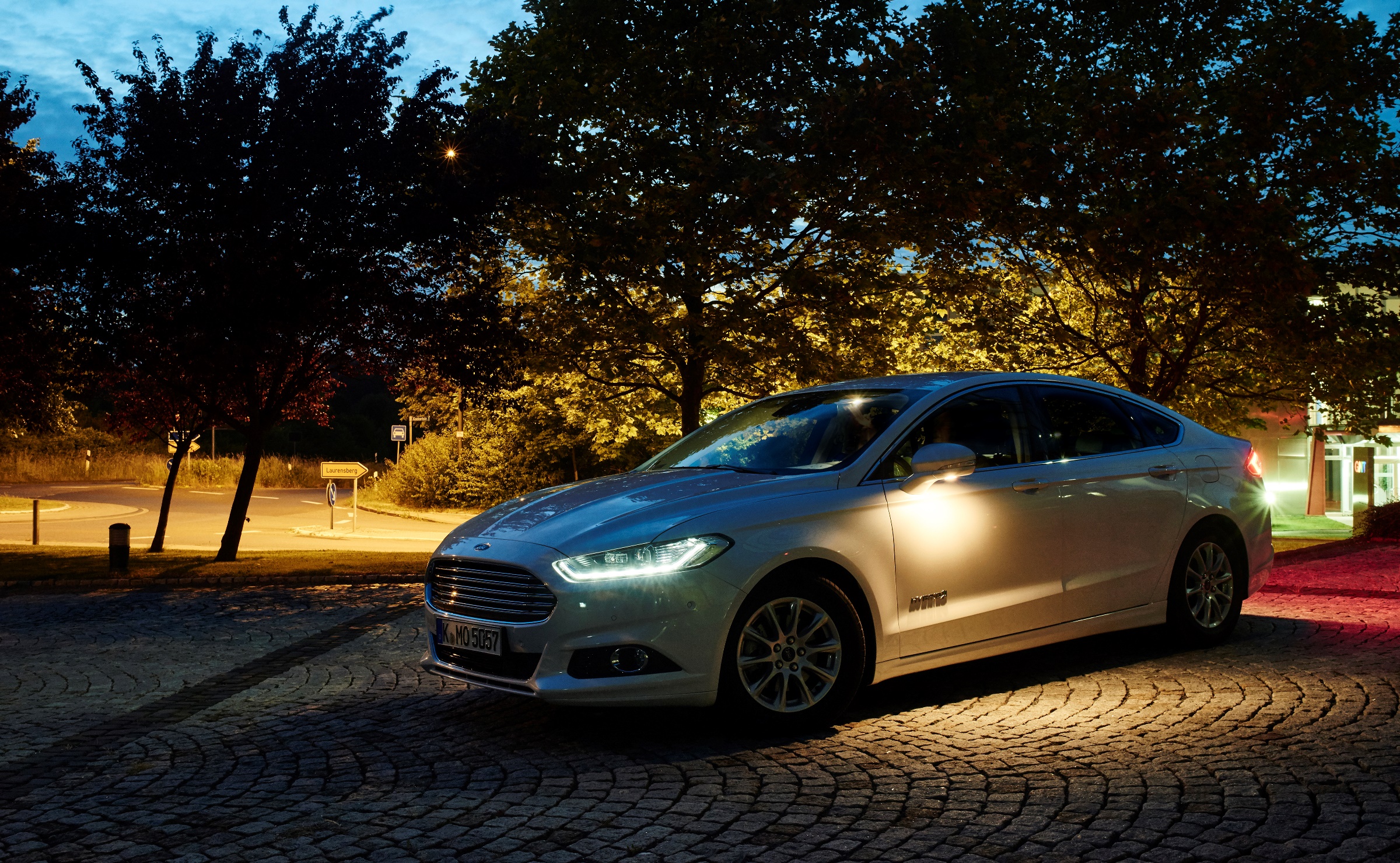 福特照明系统的工程师Michael Koherr表示,他们正在考虑组建一个“创意库”,用于研发高性价比的高级照明技术。
福特照明系统的工程师Michael Koherr表示,他们正在考虑组建一个“创意库”,用于研发高性价比的高级照明技术。 未来照明系统的研发,将成为位于德国亚琛的福特欧洲研发创新中心的重头戏。
未来照明系统的研发,将成为位于德国亚琛的福特欧洲研发创新中心的重头戏。
福特公司正在研发一种基于摄像头的高级照明系统,该技术可在车辆行驶到岔路和环岛的时候,自动拓宽近光灯的光束。同时,福特还在研发由红外线图像激发的定向照明技术,可照亮道路前方的行人和大型动物。此外,福特还将研发一种与GPS相连的智能照明系统。
“我们相信,福特新系统的优势将超越市场上的任何产品,” Michael Koherr表示,他是位于德国亚琛的福特欧洲研发创新中心的一名照明系统工程师。
福特汽车正在考虑组建一个“创意库”,为将来建设高性价比的生产系统收集创新的想法。
实现这一价值,需要使用公司现有的照明系统,但必须辅以优化的软件。Koherr解释道:“我们已经有用于车道保持、行人侦测和路标识别的前视摄像头了。现在我们正在为摄像头设计一种特殊的算法。这样终端用户所必须支付的成本就相对较低了,因为我们主要研发的是作动器软件。”
“在环岛地带,我们的光束扩展系统可以让驾驶员看清出口,以防撞上过马路的自行车和行人,”他补充道。
红外线定向照明系统还处于前期研发阶段,前格栅中安装的一个摄像头可以同时侦测多达8个潜在威胁(包括人和大型动物),侦测距离最大可达120米。
接着,聚光灯可以照亮2个威胁目标,用雾灯旁边的两盏LED灯在地上投射出一块光斑和一条光带。这些被照亮的物体将会同时显示在车载资讯系统的屏幕上,并根据其远近和危险程度用红色或黄色的框标出。
与GPS相连的摄像系统同样处于研发阶段。该系统拥有学习功能,这意味着车辆先前驾驶过的线路信息可以输入系统,累积成一个知识库。当车辆第二次通过这条线路的时候,根据预测到的道路弯曲与陡坡等特征,车辆的照明系统将启动最佳的照明强度与相关功能。“驾驶员通过某条道路的次数越多,数据也会变得越精确。” Koherr补充道。
福特已经开始使用这一高级照明系统,并且还将在此基础上添加新功能,其中包括动态LED前大灯。这是一种将完整的LED系统与适应性前大灯结合起来的技术。它可以根据驾驶环境调整前大灯的光束角度与强度。它也可以根据车速、环境光照条件、转向角度、前方距离与挡风玻璃雨刮器的活动等信息选择照明方案,共有7种设定可以选择。
福特汽车还为适应性LED灯研发了无眩光高光束技术。该技术可以在检测到迎面而来的车辆,而后通过有效调节近光灯亮度,以避免强光影响对方司机视线,但在除此以外的其他情况下可以保持最大限度的照明。
福特为非适应性LED灯研发的“自动高光束控制技术”则可以在检测到迎面而来的车辆后,自动转换至较暗的光束。
作者:Stuart Birch
来源:SAE 《汽车工程杂志》
Ford researches 'intelligent' lighting systems
Ford is developing a camera-based advanced technology lighting system that can automatically widen dipped beams at road junctions and roundabouts. The company is also researching infrared image triggered spotlighting to illuminate pedestrians and large animals in the road ahead. An intelligent GPS linked system is on Ford’s illuminating research technology list, too.
“We believe our new systems will offer more than others on the market,” said Michael Koherr, Lighting Systems Engineer at Ford of Europe’s Research and Innovation Center at Aachen, Germany.
Ford is currently considering what he terms “a pool of ideas” that could lead to possible value-for-money production systems.
Achieving that value will be partly via the use of the company’s existing off-the-shelf lighting systems but with enhanced software capability. Explained Koherr: “We already have forward-view cameras for lane keeping, pedestrian detection, and traffic sign recognition. Now we are developing a special algorithm for the camera system. The cost to the end user will be relatively low because the main area of development is the actuator software.
“At roundabouts, our beam widening system helps the driver to clearly see the exits and check if cyclists and pedestrians are crossing the road,” he added.
The spotlighting IR system, which is now in pre-development phase, uses a camera positioned in the front grille of the car that can simultaneously track up to eight potential hazards (people and/or large animals) at a maximum range of up 120 m (395 ft).
The spotlight can then illuminate two hazards, placing a spot and a stripe on the road surface, illuminated by two LED lamps positioned adjacent to the car’s fog lights. These highlighted objects are simultaneously displayed on the car’s infotainment screen, marked (according to proximity and perceived danger) in a red or yellow frame.
The GPS linked camera system, now being researched, has a learning capability. Information about previously driven routes builds up a stored knowledge base. When a route is driven more than once, the car’s lighting system can anticipate bends and specific features such as sudden dips, to activate optimum lighting levels and functions. “The more a driver travels a particular road, the more accurate the data becomes,” added Koherr.
The advanced lighting systems already used by Ford, and on which the new capabilities will be based, include dynamic LED headlights, which combine full LED systems via adaptive front lighting. This adjusts the headlight beam angle and intensity to match the driving environment. The system can choose one of seven settings dependent on vehicle speed, ambient lighting conditions, steering angle, distance to the vehicle ahead, and windshield wiper activation.
Ford also offers glare-free high beam technology for the adaptive LED lights, which detects vehicles ahead and reduces light (effectively dipping) that could dazzle oncoming drivers, but provide maximum illumination outside that sector.
Ford’s Auto High Beam Control for non-adaptive LED lights detects oncoming vehicles and automatically switches to dipped beam.
Author: Stuart Birch
Source: SAE Automotive Engineering Magazine
等级
打分
- 2分
- 4分
- 6分
- 8分
- 10分
平均分
- 作者:Stuart Birch
- 行业:汽车
- 主题:安全性人体工程学/人因工程学车身/机身与架构
